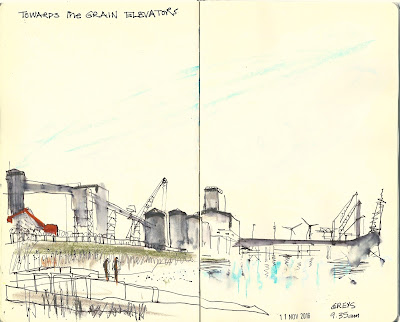 |
| Resting gracefully in the Bedford Chapel |
 |
| A gentle knight at ease |
The tone of Simon Jenkins' description of St Michael’s church* in Chenies village is peevish. As the particular riches in St Michael’s are incarcerated behind a screen of wrought iron and glass. His grumble and mine. This chapel of monuments, the Bedford Chapel
is denied us. The chapel (runs
the length of the church on the north side). a monument (1556) to the Dukes of
Bedford (Russell Family) and a collection of funerary loveliness that extends 500 years.
At noon, on the day of my visit, although the church in near darkness, you could just make out the shapes and colours of these resting places and their attendant banners.
At noon, on the day of my visit, although the church in near darkness, you could just make out the shapes and colours of these resting places and their attendant banners.
Squinting through the glass and iron screen I could just make
out these exciting forms of tombs and monuments and made two drawings.
Perhaps one day as Jenkins suggests
‘proper access should be permitted or the wall redesigned to give a better view
from the nave.'
For now we see through a glass, darkly; but then
face-to-face: now I know in part; but then shall I know even as also I am
known. 1 Corinthians 13:12
*England's Thousand Best Churches by Simon Jenkins 1999
*England's Thousand Best Churches by Simon Jenkins 1999













